Last Updated on June 1, 2022
Primarily known for its eco-friendly tourism, Costa Rica aims to preserve as many different regions as possible and has over 26 national parks. From mountainous cloud forests to volcanoes, coastline, wetlands and rain forests, the country is bursting with these parks. So when choosing the best, in Costa Rica it isn’t too much to ask for a trifecta – lush, green jungle, wild animals and sandy beaches to lay the afternoon away. Costa Rica has two such national parks: both Manuel Antonio on the Pacific coast and and Cahuita on the Caribbean coast.
 While both can boast jungle, wildlife and beach, these are two very different experiences. Despite a US$16 entrance fee, Manuel Antonio is one of Costa Rica’s most popular destinations. Cahuita, on the other hand, costs next to nothing to get in (US$5), and remains a more off-the-beaten path National Park in comparison. Most travelers don’t have time to hop from coast to coast during a trip to Costa Rica, so read on for a closer look at both to find which might be the right fit for you.
While both can boast jungle, wildlife and beach, these are two very different experiences. Despite a US$16 entrance fee, Manuel Antonio is one of Costa Rica’s most popular destinations. Cahuita, on the other hand, costs next to nothing to get in (US$5), and remains a more off-the-beaten path National Park in comparison. Most travelers don’t have time to hop from coast to coast during a trip to Costa Rica, so read on for a closer look at both to find which might be the right fit for you.
The Smackdown: Manuel Antonio vs Cahuita
Manuel Antonio National Park
At 4,014 acres (16.24 km2), Manuel Antonio National Park is Costa Rica’s smallest, but certainly most famous national parks in the country. This family-friendly park is located 30 kilometers south of Quepos on the Pacific.
The animals are the main draw at this park and there are plenty of them: four kinds of monkeys, both the three-fingered and the two-fingered sloth, raccoons, pacas, coatis, hundreds of exotic birds, snakes, spiders, iguanas and crabs.
 With wildlife sightings at Manuel Antonio essentially guaranteed, tourists come in flocks to spot them. Young, old, agile and those moving very slowly all crowd the main paths early in the day, but sneak off to some of the more secluded hiking trails and you’ll have the forest to yourself. Head back to the beautiful blue beaches, however, and there is no way to escape the crowds, who line the sand, soaking up the sun.
With wildlife sightings at Manuel Antonio essentially guaranteed, tourists come in flocks to spot them. Young, old, agile and those moving very slowly all crowd the main paths early in the day, but sneak off to some of the more secluded hiking trails and you’ll have the forest to yourself. Head back to the beautiful blue beaches, however, and there is no way to escape the crowds, who line the sand, soaking up the sun.
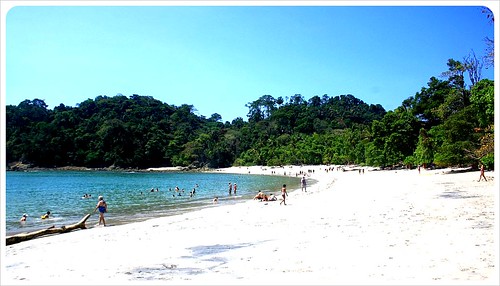 There are smaller paths in the park that allow you to get away from the crowds, who tend to stay on the main trails. My favorite one is one leading high up to the top of a cliff with expansive views out over the ocean and some of the park’s picture perfect beaches – every time I hiked up there, I ran only into a couple of people. Plan in a few hours to explore the jungle and spot animals as you go. The monkeys are alarmingly accustomed to the presence of tourists here and have no qualms about coming right up to people to get their hands on some chips or cookies. Regardless of the number of people around, families of raccoons are known to walk right up to bags and coolers to snatch food, another good reason to head away from the madness and catch the animals in their natural behavior.
There are smaller paths in the park that allow you to get away from the crowds, who tend to stay on the main trails. My favorite one is one leading high up to the top of a cliff with expansive views out over the ocean and some of the park’s picture perfect beaches – every time I hiked up there, I ran only into a couple of people. Plan in a few hours to explore the jungle and spot animals as you go. The monkeys are alarmingly accustomed to the presence of tourists here and have no qualms about coming right up to people to get their hands on some chips or cookies. Regardless of the number of people around, families of raccoons are known to walk right up to bags and coolers to snatch food, another good reason to head away from the madness and catch the animals in their natural behavior.
Advantages of Manuel Antonio National Park
-
- Animal sightings 100% guaranteed
- Pristine beaches
How to get to Manuel Antonio: From San Jose’s Coca Cola bus terminal (Calle 16 between avenidas 1 and 3) there are three daily buses. The ride takes 3.5 hours. $5.50
Park Admission: US$16 (free for children under 12)
What to bring: Camera, money (cash only – and if you want to hire a guide, extra cash to pay him & tip him), bathing suit & beach towel, binoculars
Tip No 1: Rent a guide. While we saw plenty of wildlife, guides who work in the park park know the best spots to see wildlife and carry high-tech binoculars to spot monkeys and sloths hiding high up in the trees.
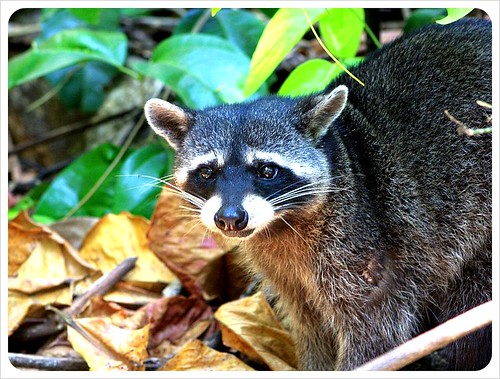 Tip No 2: Visit early in the morning. If you stay directly in Manuel Antonio, you can get up early and be at the park entrance right at 7am to arrive before the tour buses arrive around 9 or 10.
Tip No 2: Visit early in the morning. If you stay directly in Manuel Antonio, you can get up early and be at the park entrance right at 7am to arrive before the tour buses arrive around 9 or 10.
Cahuita National Park
Cahuita is a sleepy beach town on Costa Rica’s Caribbean coast, just half an hour from popular Puerto Viejo. The small village has several budget hotels but is practically undeveloped in comparison to Manuel Antonio. The national park at the end of town, which runs parallel to the beach, is not only known the wealth of wildlife on land, but also for its reef which is perfect for snorkeling and scuba diving. Cahuita National Park is also perfect to pop into for a day out on the nearly empty beaches, surfing and sunning. Entry is technically free, but donations are welcome.
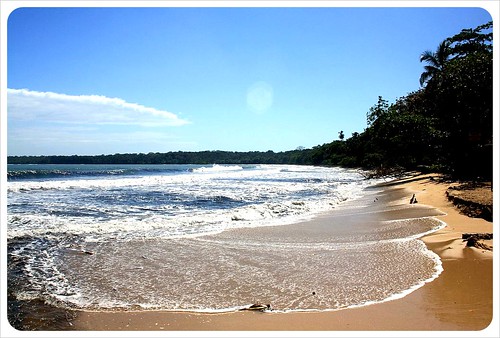 Enjoy the sounds of the jungle during a walk along the two-mile tourist-free path on the beach. The animals here live in a much more undisturbed environment, which makes them much more shy and harder to spot, so keep an eye or two out for the rich variety of wildlife: howler monkeys, Capuchin monkeys, sloths, toucans, pacas, coatis, raccoons, snakes, various kinds of colorful crabs and hundreds of different kinds of fish and coral for divers. Hire a guide for optimal animal spotting.
Enjoy the sounds of the jungle during a walk along the two-mile tourist-free path on the beach. The animals here live in a much more undisturbed environment, which makes them much more shy and harder to spot, so keep an eye or two out for the rich variety of wildlife: howler monkeys, Capuchin monkeys, sloths, toucans, pacas, coatis, raccoons, snakes, various kinds of colorful crabs and hundreds of different kinds of fish and coral for divers. Hire a guide for optimal animal spotting.
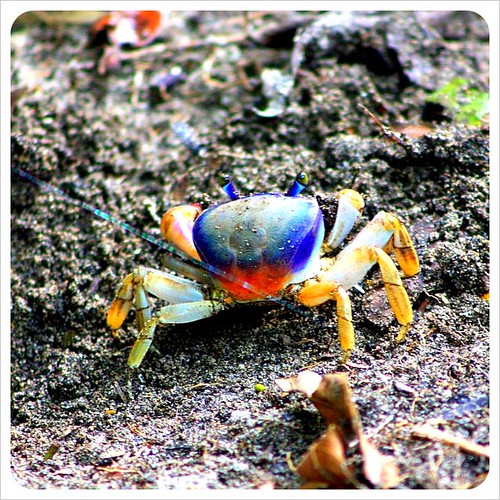 Because the National Park and the town are less developed than Manuel Antonio, exploring is less organized. The start of the park is an easy walk on a wide sandy path, but you will shortly come to a river crossing, which either requires a silly 20-second boat ride across the river, or wading through chest-high water to get to the other side. Get across that, and you will feel like you have the place to yourself.
Because the National Park and the town are less developed than Manuel Antonio, exploring is less organized. The start of the park is an easy walk on a wide sandy path, but you will shortly come to a river crossing, which either requires a silly 20-second boat ride across the river, or wading through chest-high water to get to the other side. Get across that, and you will feel like you have the place to yourself.
Advantages of Cahuita National Park:
- No crowds
- Great for diving & snorkeling
- Ideal for surfing
- Cheap (US$5 for foreigners)
How to get to Cahuita: From San Jose’s Terminal Atlantico Norte (avenida 9, calle 12) buses leave every 2 hours between 6am and 6pm with Autotransportes Mepe. The ride takes about 4 hours; US$9
From the Gran Terminal del Caribe bus terminal, (Calle Central, 1 block north of Avenida 11) there are five buses daily.
There is also a private shuttle company that offers daily rides from San Jose to Cahuita for US$55. If you don’t feel comfortable using public transportation, or are worried about the language barrier, you might want to check out these minibuses. The journey isn’t much faster, but you can communicate with them and book your tickets in English, via email or Whatsapp. Check out Caribe Shuttles here for all of their routes.
Tip: Don’t pay for the boat to cross the river. If you walk on the beach where the river hits the ocean, the river is narrow and shallow enough to be crossed on foot. Just make sure to carry your camera & valuables high up.
Admission: Admission is by donation at the main entrance in Cahuita, but if you arrive by car from Puerto Viejo and take a secondary entrance (sign posted on the main street), they charge foreigners US$5.
What to bring: A drybag to keep your valuables dry, especially if you’re visiting during rainy season (downpours are to be expected), bathing suit, camera, binoculars
Manuel Antonio or Cahuita: Our verdict
There is no clear winner here as both parks are definitely worth a visit. Manuel Antonio has much prettier beaches and more visible wildlife, whereas Cahuita offers more tranquility and allows you to take your time without other tourists. Manuel Antonio feels like a resort and is as much about a day at the beach as about a national park, while Cahuita is heavy on the park, with a beach on the side.
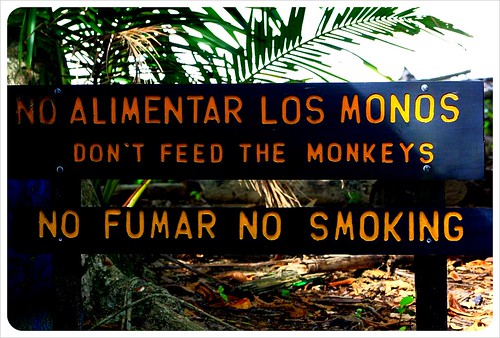

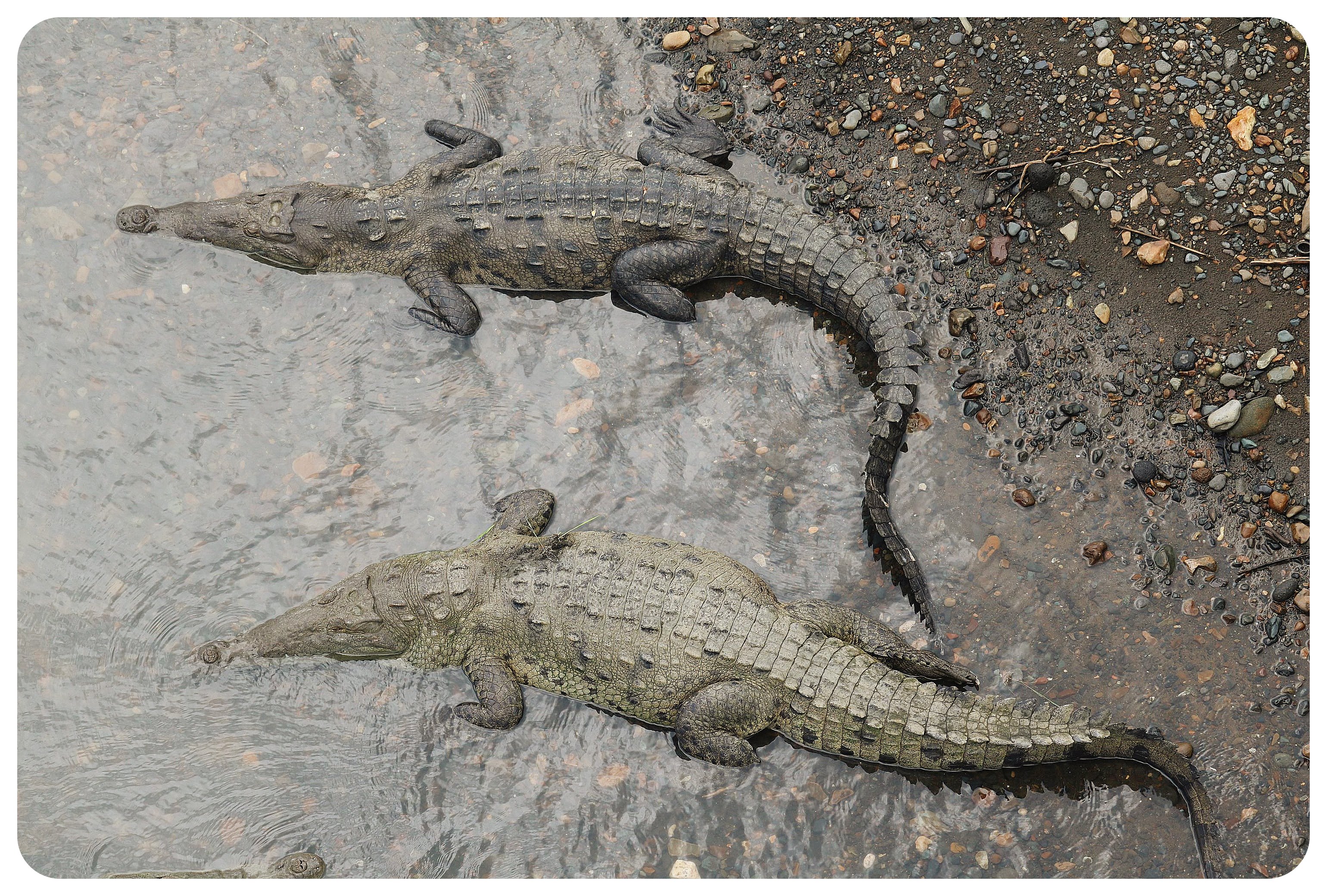
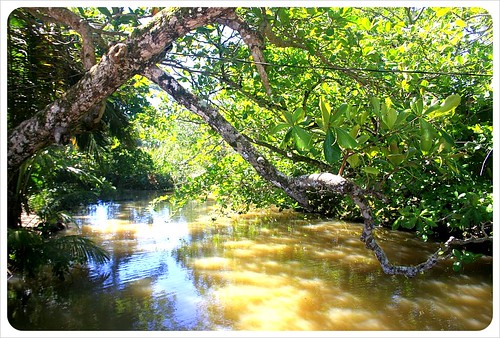
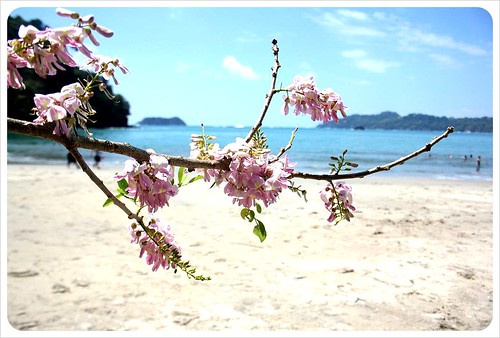
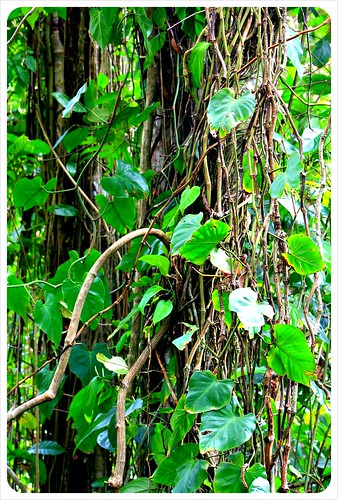
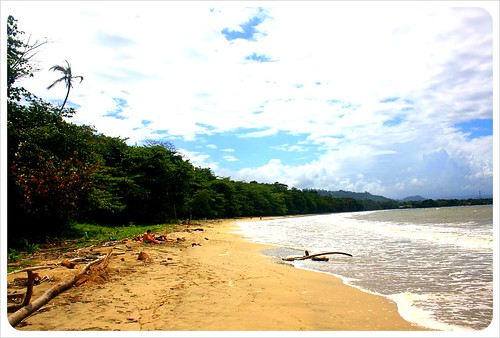

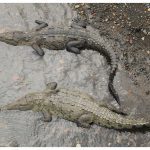
Stacy
Wednesday 6th of January 2021
Just discovered your blog...Thank you for the insight. We will be traveling by bus and your post has me a bit concerned. In the section How to get to Cahuita - you have indicated the cost to get to Cahuita is $ 610. USD . Please tell me this is a typo.
Dani
Thursday 7th of January 2021
Stacy, thank you so much for pointing that out! I think it used to be 610 Colones (about 1 Dollar) - I've just updated the information. You can take a public bus for US$9 or a private shuttle for US$55.
jennifer
Tuesday 23rd of December 2014
Thanks for the great post! I'm considering Manuel Antonio but have heard so many mixed reviews. Really sounds like it's worth a visit from your description. Happy Travels.
Dany
Friday 26th of December 2014
Jennifer - Manuel Antonio is definitely worth a visit! My only recommendation would be to go as early as possible to avoid the crowds and to invest in one of the guides that are waiting by the entrance (you can negotiate their fee with them). That way, you'll get the most out of your visit because they know where all the animals are hiding :) Enjoy your time in Costa Rica!
Lisa/LtTravel
Monday 17th of March 2014
I'm sending a mother and 2 teens in July to CR. I originally had them staying the first 4nts in Manuel Antonio but then changed to Puerto Viejo, the oldest daughter wants more beach time the son wants more adventure time. After reading the article I think I putting them back to the original plan with 4nts in Manuel Antonio. Wonderful article - I hope to check out both in May when I'll be in CR.
Dani
Sunday 23rd of March 2014
Lisa - great to hear that you decided on 4nts in Manuel Antonio - I think that's the right decision :) It's the perfect place to combine beach and adventure! Enjoy CR in May!
Manuel Antonio National Park
Tuesday 28th of January 2014
Both parks are amazing but I personally choose Manuel Antonio due to the beautiful fauna you can find there, but thank you very much you really named the advantages of each one in an objective way Very useful
crazy sexy fun traveler
Sunday 29th of April 2012
So good tips! I spent like 2 days trying to decide if to go to the Caribbean or Pacific coast of Costa Rica and which national parks to visit :) Now I know more about it :)
jess
Monday 30th of April 2012
If you have time, you should go to both sides of the country as they are totally different! These are the two national parks, but you also have PUerto Viejo on the Caribbean side - with nearby Punta Uva being one of our fav beaches ever, but then on the Pacific you've got Samara and tons of other beaches, too...Let us know if you have questions!